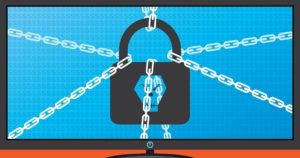What is Ransomeware
Ransomware is a type of malicious software that infects a computer and restricts users’ access to it until a ransom is paid to unlock it. Ransomware variants have been observed for several years and often attempt to extort money from victims by displaying an on-screen alert. Typically, these alerts state that the user’s systems have been locked or that the user’s files have been encrypted. Users are told that unless a ransom is paid, access will not be restored. The ransom demanded from individuals varies greatly but is frequently $200–$400 dollars and must be paid in virtual currency, such as Bitcoin.

How can I protect myself from Ransomware attacks:
- Backup up your computer regularly and keep a backup copy on a separate system (i.e. Google Drive, your H: Drive on the server).
- There are dozens of ways other than Ransomware that files can suddenly vanish, such as fire, flood, theft, a dropped laptop or even an accidental delete.
- Do Not enable macros in document attachments received via email.
- Microsoft deliberately turned off auto-execution of macros by default many years ago as a security measure. A lot of malware infections rely on persuading you to turn macros back on, so don’t do it!
- To ensure you have disabled macros please see this article: How to disable macros in Microsoft Office.
- Do Not open unsolicited email attachments.
- The crooks are relying on the dilemma that you shouldn’t open a document until you are sure it’s one you want, but you can’t tell if it’s one you want until you open it. If in doubt, throw it out.
- Forward suspicious emails to technology@isd518.net.
- Learn how to spot suspicious email by visiting our Phishing resources page.
- Ransomware is commonly delivered via Phishing emails that entice you to click a malicious link or download and open a malicious file attachment. Visit our Phishing resources page for tips on how to spot and avoid Phishing attacks.
Security
- Internet Security
- Password Security
- Phishing
- Phone Security
- Protect Your Computer
- Ransomware
